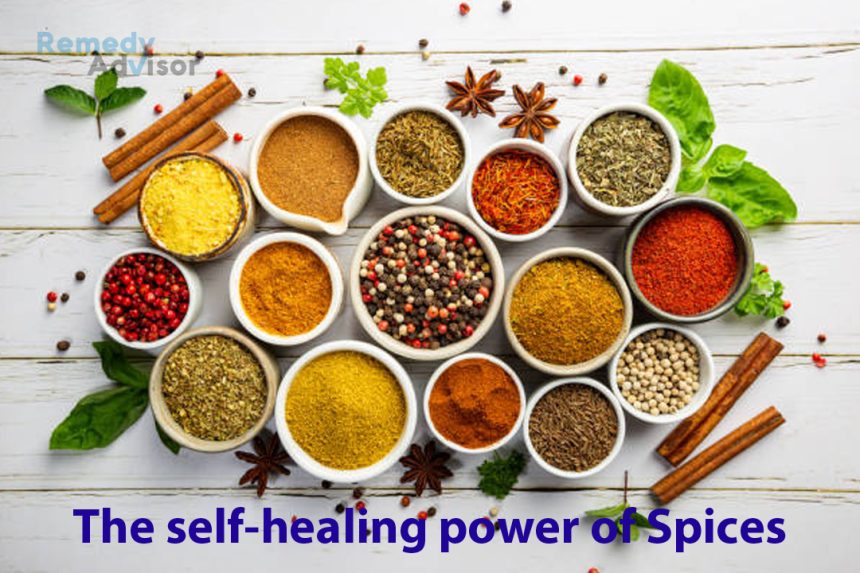Did you know that celery seed fights gout? That bay leaves stop headache pain? We didn’t know either until noted botanist James A. Duke, PhD, shared with us his picks for the most use fid medicinal spices…
Bay leaf
Good for: Migraines, diabetes.
Healing properties: Bay leaves are rich in pain-killing compounds called parthenolides. They also contain a compound that boosts insulin’s ability to control blood glucose. Eating food seasoned with bay leaves helps prevent diabetes and helps keep adult-onset (Type 2) diabetics from worsening to the point that they need daily insulin shots.
How to use: Make a tea by steeping several bay leaves in hot water. Or add bay leaves to chicken or bean soup.
Caution: Bay leaves themselves should not be eaten.
Cayenne
Good for: Chronic pain, arthritis, ulcers, bronchitis, colds, influenza.
Healing properties: Cayenne contains capsaicin, a compound proven to block Substance P. That’s the brain chemical involved in transmission of pain impulses.
Capsaicin also boosts the body’s production of natural painkillers called endorphins and destroys the ulcer-causing stomach bacterium Helicobacterpylori.
How to use: For pain relief, soak gauze in a hot pepper sauce containing cayenne, and apply it to the painful area. My wife has found this very effective for her back pain.
For ulcers or for blocked air passages, add one-half teaspoon hot pepper sauce or cayenne to hot lemonade, and drink.
Celery seed
Good for: Arthritis, gout.
Healing properties: Celery seed contains more than a dozen distinct anti-inflammatory compounds. The same compounds are found in celery stalks.
How to use: Take two capsules of celery seed extract (available in health-food stores). You can also eat four stalks of celery.
Garlic
Good for: Heart disease, high blood pressure, impaired immunity.
Healing properties: One of nature’s most potent antibiotics, garlic inhibits growth of fungi, yeast and bacteria including strains that are becoming resistant to synthetic antibiotics.
Garlic also contains allicin, a compound that works like aspirin to thin the blood. Because of this blood-thinning effect plus its proven cholesterol- and blood-pressure-lowering powers garlic is effective at preventing atherosclerosis.
How to use: I add garlic cloves to almost every dish I cook. I also cook with chives, leeks and onions. All have properties similar to those of garlic.
Each time my grandchildren visit, I take garlic pills to ward off any infections they might have brought along with them.
Fearing bad breath, some people prefer “deodorized” garlic pills. But I’m convinced that the more a garlic pill stinks, the better it is for you.
Beware: If you take aspirin to prevent a heart attack, garlic may thin your blood too much. Discuss this with your doctor.
Licorice
Good for: Enlarged prostate, ulcers.
Healing properties: Glycyrrhizic acid, the major active ingredient in licorice, prevents conversion of testosterone to dydrotestosterone. This reduces swelling of the prostate, thereby putting an end to frequent urination, the most common symptom of prostate enlargement. Licorice also contains numerous antibacterial compounds, including some that kill ulcer causing bacteria.
How to use: Munching on licorice candy will not work. That’s because most licorice candy sold in the US is made with anise, not licorice. Instead, use a piece of licorice root to stir your tea.
The active ingredients will steep into the tea and act as a natural sweetener, too. You can also add licorice root extract to hot drinks. Licorice root and licorice root extract are available at health-food stores.
Caution: Too much licorice can raise blood pressure and cause heart problems. If you have high blood pressure, consult a doctor before using licorice.
Rosemary
Good for: Alzheimer’s disease
Healing properties: Sometimes called the “herb of remembrance,” rosemary contains five compounds that seem to prevent the breakdown of acetylcholine, a neurotransmitter that’s deficient in patients with Alzheimer’s.
I believe that rosemary works just as well as the Alzheimer’s drug tacrine (Cognex). Tacrine works in only 25% of patients and it can cause liver damage.
I also believe that eating rosemary can reduce one’s risk of developing Alzheimer’s.
How to use: Rosemary can be added to all sorts of recipes, including fish and chicken dishes.
Since there’s evidence that rosemary can be absorbed through the skin, you might try tossing rosemary sprigs into your bath using rosemary shampoo and rubbing rosemary lotion into your skin.







